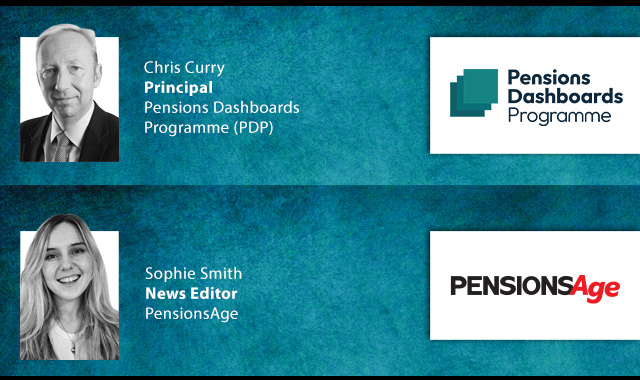A new report compiled by the Association of Independent Professionals and the Self-Employed (IPSE) has urged the government to dismiss the idea of auto-enrolling self-employed workers.
The IPSE has said that the proposal, championed by the think tank Demos, amongst others, is not a viable savings solution for the self-employed. It says that without an employer to enrol individuals and a reduction in their ability to be in control of their money, the self-employed would lose two fundamental attractions of their working arrangements under any auto-enrolment regime.
IPSE’s reservations appear to have been backed up by research carried out on its behalf by ComRes, which found that only 36 per cent of the self-employed think that they would remain in a scheme if placed into it via soft compulsion. At present, ComRes has estimated that only 31 per cent of the UK’s 4.8 million self-employed workers save into a pension, while 67 per cent are concerned about saving for later life.
Calling the self-employed pensions crisis a “ticking time bomb”, the report instead calls for the creation of a sidecar pension scheme for the self-employed which would allow them to save for later life but also put aside money into a separate fund for any emergencies. It also argues that the forthcoming single financial guidance body should provide tailored advice on how the self-employed can save for later life, after finding that 51 per cent of the self-employed trust government websites for guidance — making it one of the most trusted sources of advice. In addition, the IPSE says that there should be open access to a free mid-life financial health MOT that connects older self-employed people with IFAs.
IPSE’s senior policy adviser Jonathan Lima-Matthews said that the recent growth in self-employment had been a revelation, but that a revolution was now needed to provide long-term financial security and alleviate a ticking pensions time bomb.
“There is a real opportunity for both government and the pensions industry to avert this crisis by developing feasible and forward-thinking solutions to give long-term peace of mind to the burgeoning self-employed workforce,” he said.
Hargreaves Lansdown head of policy Tom McPhail praised the report, saying that it recognised that there was no simple one-size-fits-all solution.
“In particular it avoids the call for the government to just auto-enrol everyone through the tax system, which would be extremely difficult to deliver at this time,” he said.
McPhail said that the IPSE should have added another measure into the report, which was to grant individuals the right to ask employers to pay pension contributions into a pension of their own choice. He argued that this would strengthen individuals’ relationship with their retirement savings and increase the likelihood of them continuing to save when switching status to self-employed.
“Most self-employed people start their working lives in employment, on average not making the switch to self-employment until the age of 32,” he said.
“So the self-employed challenge isn’t just a question of getting them into pensions; it’s more one of how we stop losing them when they transition from employment to self-employment.”
However, Aegon head of pensions Kate Smith, maintained that building on the nudge principles from auto-enrolment was still an option worth exploring. She said that in combination with HMRC’s digital tax initiative, auto-enrolment could work for the self-employed.
“Paying tax more frequently could act as a prompt for people to consider their savings at the same time,” pointed out Smith.
She also made a case for the self-employed to continue using existing workplace pensions from previous jobs as a solution. With 44 per cent of self-employed people aged between 50 and 65, she said that it was highly likely that they will have been employed before and therefore have saved into one or more workplace pensions.
Meanwhile, national financial planners LEBC have called for a restoration of the ‘carry back’ rule on pensions contributions of the self employed. This allowed self-employed tax payers to pay contributions in the current tax year but have their contributions offset against the previous year’s earnings or profits.
“This ‘carry back’ rule was particularly helpful to those who have fluctuating earnings and are not confident of their final figures until after the tax year end,” said Jack McVitie, chief executive at LEBC.
“Without it many self-employed and others with variable earnings find it difficult to budget for regular payments into pensions with confidence. Restoration of carry back would we believe greatly assist the self-employed and other gig economy workers.”
Latest News
-
Research highlights worsening pension savings gap
-
Over half of pension schemes support tax incentives to increase pension investment
-
Concerns raised over slow progress on state pension correction exercise
-
National LGPS framework for AVC launched
-
Successful matching process biggest dashboards concern
-
Over a fifth of self-employed households on track for moderate retirement income
A time for fixed income
Francesca Fabrizi discusses fixed income trends and opportunities with Goldman Sachs Asset Management Head of UK Pensions Solutions, Fixed Income Portfolio Management, Henry Hughes, in our Pensions Age video interview
Purposeful run-on
Laura Blows discusses purposeful run-on for DB schemes with Isio director, actuarial and consulting, Matt Brown, in Pensions Age’s latest video interview
Find out more about Purposeful Run On
Find out more about Purposeful Run On
Keeping on track

In the latest Pensions Age podcast, Sophie Smith talks to Pensions Dashboards Programme (PDP) principal, Chris Curry, about the latest pensions dashboards developments, and the work still needed to stay on track
Building investments in a DC world

In the latest Pensions Age podcast, Sophie Smith talks to USS Investment Management’s head of investment product management, Naomi Clark, about the USS’ DC investments and its journey into private markets
© 2019 Perspective Publishing Privacy & Cookies













Recent Stories